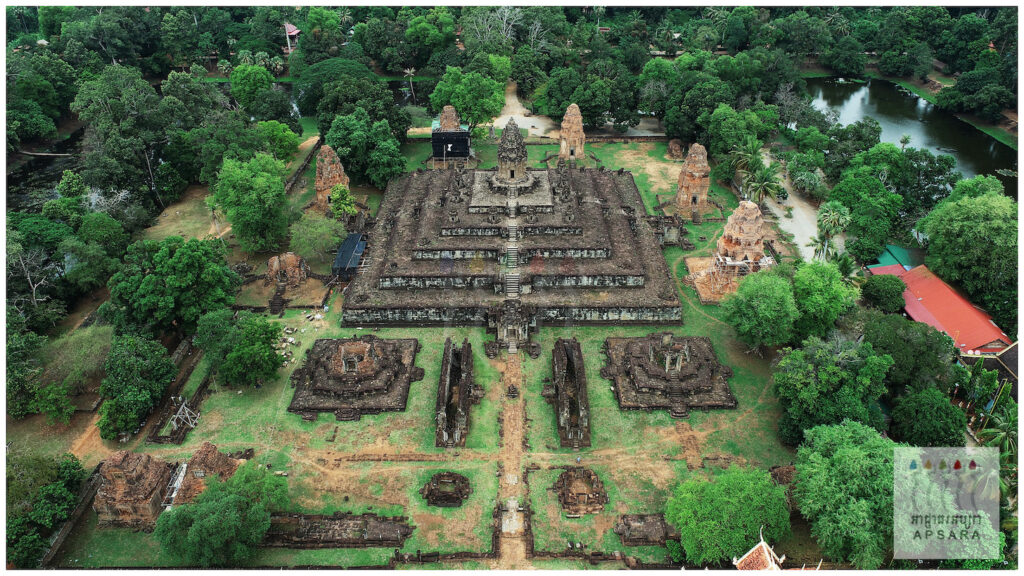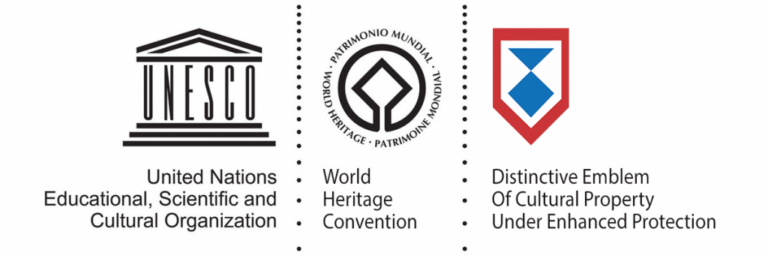- ទស្សនីយភាពស្រស់ត្រកាលនៃប្រាសាទខ្មែរ នារដូវវស្សាមានភាពទាក់ទាញយ៉ាងខ្លាំង -The Fresh Scenery of Khmer Temples During the Rainy Season is Truly Captivating- 06 October 2025
- ធម្មជាតិបៃតងស្រស់បំព្រងជុំវិញប្រាសាទបាតជុំ សំណង់ឥដ្ឋ ដែលត្រូវបានកសាងនៅពាក់កណ្តាលសតវត្សរ៍ទី១០
- អាជ្ញាធរជាតិអប្សរាជួបពិភាក្សាការងារជាមួយគណៈប្រតិភូមកពីទីភ្នាក់ងារសហប្រតិបត្តិការ និងសម្របសម្រួលទួរគី (TİKA) -APSARA National Authority Meets with Delegation from Turkish Cooperation and Coordination Agency (TİKA)- 03 October 2025
- ធម្មជាតិបៃតងនារដូវវស្សា
- អាជ្ញាធរជាតិអប្សរារៀបចំវគ្គបណ្ដុះបណ្ដាល «គ្រូបង្គោលអប់រំបេតិកភណ្ឌ» -APSARA National Authority organizes training course for “Heritage Education Trainers”- 01 October 2025
APSARA NATIONAL AUTHORITY - SIEM REAP - KINGDOM OF CAMBODIA
UNESCO Cambodia - World Heritage

Angkor is one of the most important archaeological sites in South-East Asia. Stretching over some 400 km2, including forested area, Angkor Archaeological Park contains the magnificent remains of the different capitals of the Khmer Empire, from the 9th to the 15th century. They include the famous Temple of Angkor Wat and, at Angkor Thom, the Bayon Temple with its countless sculptural decorations. UNESCO has set up a wide-ranging programme to safeguard this symbolic site and its surroundings.
Due to the unique situation prevailing in Cambodia following the Paris Peace Agreements in 1991, the country was placed under the temporary administration of the United Nations Organization permitting free and fair national elections and the mobilization of international cooperation. In response to the appeal of the late king, His Majesty Samdech Preah NORODOM Sihanouk, UNESCO committed itself to the safeguarding and preservation of the monuments and historical area of Angkor. Taking into account the exceptional situation and the special report presented by Prof. Azedine Beschaouch, his chairperson, the Committee of the World Heritage decided to waive some conditions required under the Operational Guidelines of the World Heritage Convention. Consequently, the Committee decided in December 1992 to inscribe on the World Heritage List the Angkor Site with its monuments and its archaeological zones, on the basis of criteria (I), (II), (III) and (IV) http://whc.unesco.org/en/list/668, in accordance with the ICOMOS evaluation. Then, in order to deal quickly and fruitfully with the urgent problems of conservation, the Committee inscribed the site of Angkor on the list of World Heritage in Danger and requested to take the necessary steps to meet the following conditions:
1/ Enact adequate protective legislation;
2/ Establish an adequately staffed national protection agency;
3/ Establish permanent boundaries;
4/ Define meaningful buffer zones;
5/ Establish monitoring and coordination of the international conservation effort. (Quoted from the Report of the World Heritage Committee for the inscription of the Angkor site on the World Heritage List).
After Angkor was inscribed in the World Heritage list on December 14, 1992, an International Co- Coordinating Committee for the Safeguarding and Development of the Historic Site of Angkor (ICC) was established. The creation of this ICC-Angkor was one of the conditions given by the World Heritage Committee to accept the Angkor Site on the UNESCO World Heritage List. Since that time, the ICC-Angkor has convened regularly twice a year, consistently following up on all operations being carried out on the site. It is the international mechanism for coordinating all assistance extended by different countries and organizations. It ensures the consistency of the different projects, defines the technical and financial standards and raises the attention of all concerned parties when necessary. The ICC-Angkor is co-chaired by France and Japan, represented by their Ambassadors in Cambodia. UNESCO provides the services of a Standing Secretariat.
Between 1993 and 2003, the Royal Government met all conditions. Therefore, the World Heritage Committee decided, in June 2004, to remove the Angkor site from the List of the World Heritage in Danger.
Most recently, end of November 2017, the 1954 Convention Committee (the famous Hague Convention which protects heritage in case of conflict and acts to keep the peace), decided unanimously, to provide ANGKOR’s site with ENHANCED PROTECTION, that is to say that the international community is responsible, on a universal level, to prevent any action against the integrity of ANGKOR and to avoid harm conflict situations.
As such, the 1954 Convention helps Cambodia to protect ANGKOR and strengthens the policy pursued by the Royal Government in favor of peace and against war.
For more information, please visit UNESCO Cambodia Official Website :
http://www.unesco.org/new/en/phnompenh


